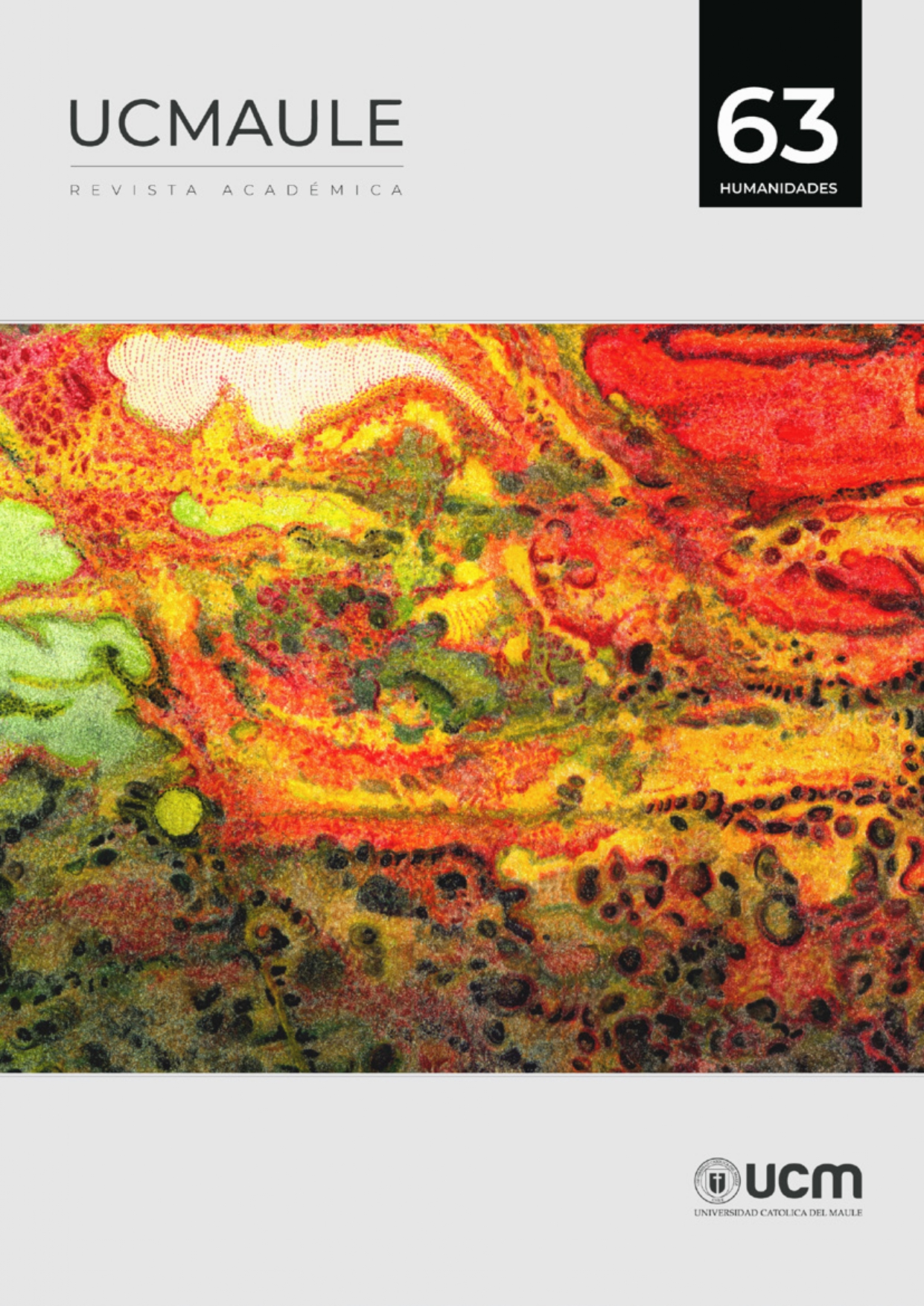Una revisión narrativa sobre las estrategias para la intervención de la comunicación en niños y niñas con alto riesgo de trastorno del espectro del autismo
Contenido principal del artículo
Resumen
Detalles del artículo
Aguado, G. y Gándara, C. (2013). Evaluación de la comunicación y el lenguaje en el Trastorno del Espectro Autista. Ediciones Libro Amigo.
American Psychiatric Association (2013). Diagnostic and Statistical Manual of mental di- sorders. American Psychiatric Publishing.
American Speech – Language – Hearing Association (2020). Augmentative and Alternative Communication. https://www.asha.org/public/speech/disorders/AAC/
Barber, A., Saffo, R., Gilpin, A., Craft, L. & Goldstein, H. (2016). Peers as clinicians: Examining the impact of Stay Play Talk on social communication in young preschoolers with autism. Journal of Communication Disorders, 59(1), 1-15. https://dx.doi.org/10.1016/j.jcomdis.2015.06.009
Bourque, K. & Goldstein, H. (2020). Expanding Communication Modalities and Functions for Preschoolers with Autism Spectrum Disorder: Secondary Analysis of a Peer Partner Speech – Generating Device Intervention. Journal of Speech, Language and Hearing Research, 63(1), 190-205. https://doi.org/10.1044/2019JSLHR-19-00202
Chang, Y. C., Shire, S. Y., Shih, W., Gelfand, C. & Kasari, C. (2016). Preschool Deployment of Evidence-Based Social Communication Intervention: JASPER in the Classroom. Jour- nal of Autism and Developmental Disorders, 46(6), 2211-2223. https://doi.org/10.1007/s10803-016-2752-2
Dawson, G. et al. (2010). Randomized, controlled trial of an intervention for toddlers with autism: The Early Start Denver Model. Pediatrics, 125(1), 17-23.
Geoffray, M. M. et al. (2019). Using ESDM 12 hours per week in children with autism spectrum disorder: feasibility and results of an observational study. Psychiatria Danubina, 31(3), 333-339. https://doi.org/10.24869/psyd.2019.333
Kasari, C., Freeman, S. & Paparella, T. (2006). Joint attention and symbolic play in young children with autism: A randomized controlled intervention study. Journal of Child Psychology and Psychiatry, 47(6), 611-620.
Kasari, C., Paparella, T., Freeman, S. & Jahromi, L. B. (2008). Language outcome in autism: Randomized comparison of joint attention and play interventions. Journal of Consul- ting and Clinical Psychology, 76, 125-137.
Kasari, C., Gulsrud, A. C., Wong, C., Kwon, S. & Locke, J. (2010). A randomized controlled ca- regiver mediated joint engagement intervention for toddlers with autism. Journal of Autism and Developmental Disorders, 40, 1045-1056.
Kasari, C. et al. (2014b). Caregiver-mediated intervention for low-re-sourced preschoolers with autism: An RCT. Pediatrics, 134, e72-e79.
Kratochwill, T. et al. (2010). Single case designs technical documentation. What Works Clearinghouse. https://ies.ed.gob/ncee/wwc/pdf/wwcscd.pdf
Mairena, M. Á. et al. (2019). A full-body interactive videogame used as a tool to foster social initiation conducts in children with Autism Spectrum Disorders. Research in Autism Spectrum Disorders, 67, 101438. https://doi.org/10.1016/j.rasd.2019.101438
Martos, J. y Llorente, M. (2018). El niño al que se le olvidó cómo mirar: comprender y afrontar el autismo. La esfera de los libros.
Methley, A., Campbell, S., Chew-Graham, C., McNally, R. & Cheraghi-Sohi, S. (2014). PICO, PICOS and SPIDER: a comparison study of specificity and sensivity in three search tools for qualitative systematic reviews. BioMed Central, 14(1), 579-588. https://doi.org/10.1186/s.12913-014-0579-0
Moher, D., Liberati, A., Tetzlaff, J. & Altman, D. (2009). Preferred Reporting Items for Systematic Reviews and Meta-Analyses: The PRISMA Statement. Journal of Clinical Epidemiology, 62(1), 1006-1012. https://doi.org/10.1016/j.jclinepi.2009.06.005
Norrelgen, F. et al. (2014). Children with autism spectrum disorders who do not develop phrase speech in the preschool years. Autism, 1, 1-10. doi:10.1177/1362361314556782
Paul, R. (2018). Language disorders from infancy through adolescence: listening, speaking, reading, writing, and communicating. Elsevier.
Ruggieri, V. y Cuesta, J. L. (2017). Autismo. Como intervenir, desde la infancia a la vida adulta. Paidós.
Tager-Flusberg, H. & Kasari, C. (2013). Minimally Verbal School-Aged children with Autism Spectrum Disorder: The neglected end of the Spectrum. Autism Research, 6(1), 468- 478. https://doi.org/10.1002/aur.1329
Thiemann-Bourque, K., Brady, N., McGuff, S., Stump, K. & Naylor, A. (2016). Picture Exchange Communication System and Pals: A Peer-Mediated Augmentative and Alternative Communication Intervention for Minimally Verbal Preschoolers with Autism. Journal of Speech, Language, and Hearing Research, 59(5), 1133-1145. https://doi.org/10.1044/2016JSLHR-L-15-0313
Thiemann-Bourque, K. S., McGuff, S. & Goldstein, H. (2017). Training peer partners to use a speech-generating device with classmates with autism spectrum disorder: Exploring communication outcomes across preschool contexts. Journal of Speech, Language and Hearing Research, 60(9), 2648-2662. https://doi.org/10.1044/2017JSLHR-L-17-0049
Thiemann-Bourque, K., Feldmiller, S., Hoffman, L. & Johner, S. (2018). Incorporating a peer-me- diated approach into speech-generating device intervention: Effects on communi- cation of preschoolers with autism spectrum disorder. Journal of Speech, Language and Hearing Research, 61(8), 2045-2061. https://doi.org/10.1044/2018JSLHR-L-17-0424
Varcin, K. J. & Jeste, S. S. (2017). The emergence of autism spectrum disorder (ASD): Insights gained from studies of brain and behaviour in high-risk infants. Current Opinion in Psychiatry, 30(2), 85-91. https://doi.org/10.1097%2FYCO.0000000000000312
Yun, S. S., Kim, H., Choi, J. & Park, S. K. (2016). A robot-assisted behavioral intervention system for children with autism spectrum disorders. Robotics and Autonomous Systems, 76, 58-67. https://doi.org/10.1016/j.robot.2015.11.004
Zalaquett, D., Schönstedt, M., Angeli, M., Herrera, C. y Moyano, A. (2015). Fundamentos de la intervención temprana en niños con trastornos del espectro autista. Revista Chilena de Pediatría, 86(2), 126-131.

Esta obra está bajo una licencia de Creative Commons Reconocimiento-NoComercial-CompartirIgual 4.0 Internacional

